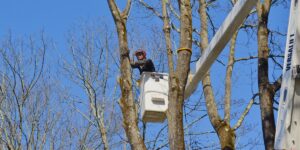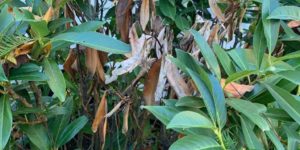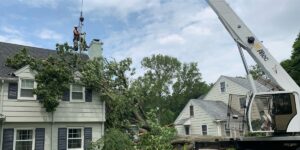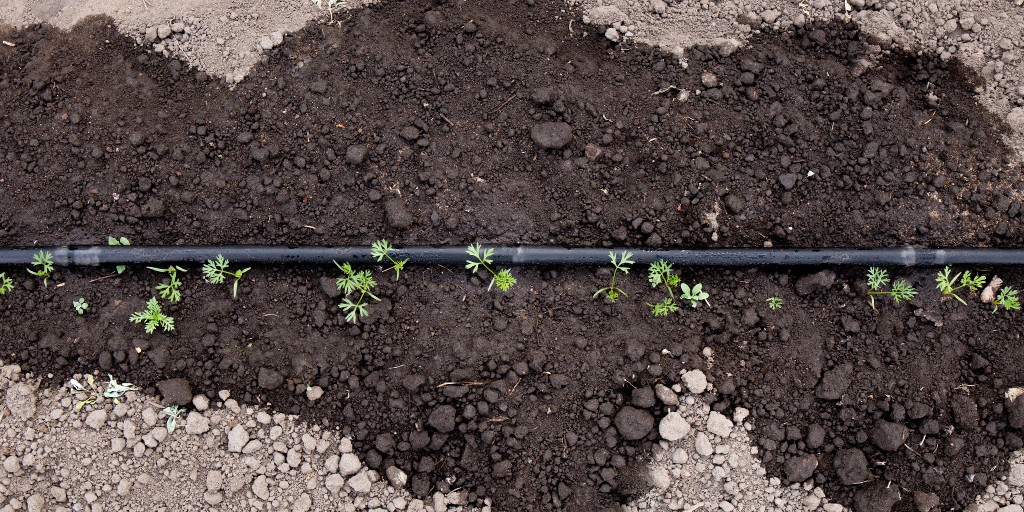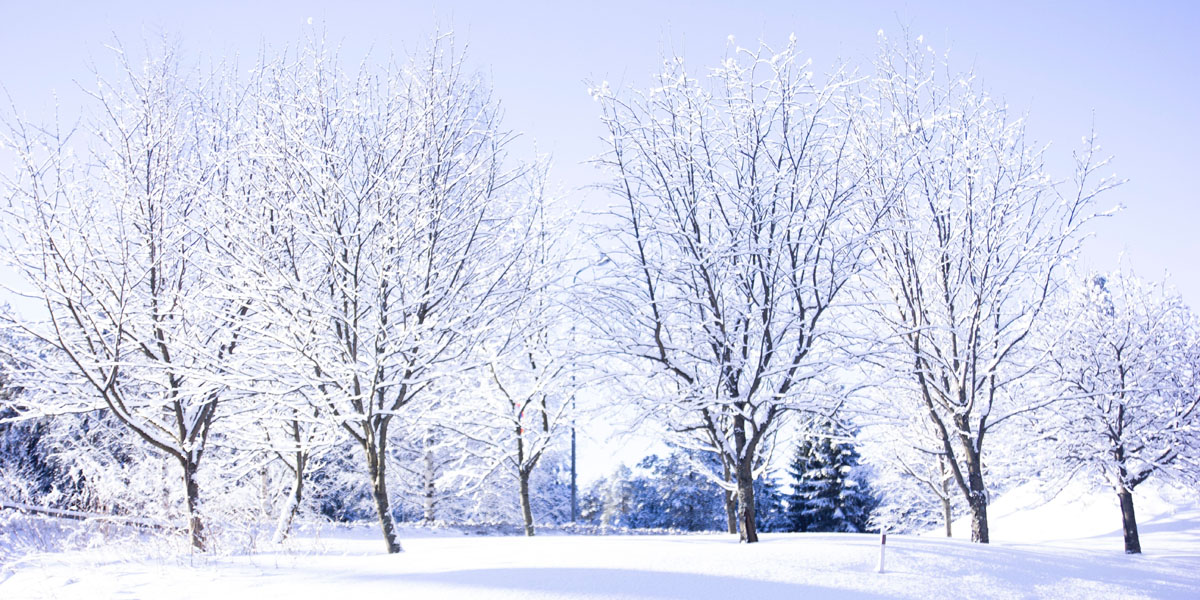Take a walk through many Morris County neighborhoods, and you’ll spot oaks, maples, sycamores, and beeches – some much older than the homes they shade. While mature trees are incredibly resilient, the ones in your yard still need a helping hand to stay healthy as they age. Learn what it takes to care for aging trees and support them through the decades to come.
Key Takeaways:
- Keep pruning light and targeted for mature maples, but avoid most pruning for old oaks since cuts can expose them to diseases like oak wilt.
- Ivy growing on mature trees should be severed at ground level (not ripped off) to prevent it from weighing down branches and hiding structural problems.
- Apply 2-4 inches of wood chip mulch around the tree (but not against the trunk) to add nutrients and organic matter to the soil over time.
- Have an ISA Certified Arborist inspect your mature oaks and maples every few years to catch diseases, pests, and structural issues early.
- Avoid building or excavating near mature trees since their roots extend farther than the canopy; construction and digging can severely damage the root system.
6 Tips for Caring for Your Old Maple and Oaks in Morris County
With proper care, you can keep your mature trees thriving in your yard for years to come. Morristown has several mature oaks and maples, including a 100-foot-tall black oak and a 95-foot-tall red oak. Some of the things we recommend doing for all your old trees include:
1. Keep Pruning Light and Targeted for Maples & Avoid Most Pruning for Oaks
Tree pruning is an essential service for trees of all ages. However, as they reach old age, their pruning needs change, and they may not need the same amount of pruning as they did years ago. This doesn’t mean you should avoid all pruning, but it needs to be lighter and more targeted than normal.
Talk with an ISA Certified Arborist before trimming branches to get their opinion on what to prune (and have them handle the service). They may suggest pruning to reduce the length of longer branches to make them more durable during a storm. An arborist can also point out dead, diseased, or damaged branches and remove them from the tree.
Maples often benefit from light, regular pruning to maintain their health and remove deadwood. Older oaks, however, typically require little pruning, and unnecessary cuts can increase their risk of disease. Pruning wounds may allow infections, like oak wilt, to enter the tree. Although oak wilt hasn’t been officially confirmed in New Jersey, it’s present in nearby states and likely to arrive in the region.
When pruning an old tree, do it in the winter to reduce stress on your tree and limit its exposure to pests and diseases.
2. Remove Any Ivy Growing on Your Mature Trees
While ivy growing on your tree can give it a distinctive look, it isn’t something you’ll want to leave on your mature trees. Ivy does not directly harm your trees, but it can cause long-term problems, such as:
- Siphon resources from the soil
- Weigh down branches
- Overtake foliage and reduce your tree’s ability to perform photosynthesis
- Hide any signs of structural defects or damage
To remove ivy from your tree, don’t attempt to rip it off the trunk. You may end up ripping off the bark if you try this. Instead, sever the ivy growing on the tree from the ground. Without access to the nutrients and water from the roots, the ivy on your tree will die and fall off.
3. Use Mulch to Prevent Weeds and Provide Nutrients to the Soil
Old trees, especially oaks, need sufficient organic matter in the soil to help them continue to support life. While fertilization can give your trees a boost of nutrients, it isn’t the same as improving the underlying soil structure with organic matter.
One of the easiest ways to add organic matter to the soil is to put a layer of wood chip mulch around the tree. The mulch will decompose over time, adding nutrients and organic matter to the soil that will support your old tree.
Another easy way to add organic matter is to avoid removing fallen leaves in the autumn. They will also decompose to add nutrients back to the soil.
WARNING: Always keep your layer of mulch 2-4 inches deep and avoid piling it around the trunk. This process is called a mulch volcano, and it can lead to decay and fungi developing.
4. Have an Arborist Inspect Your Trees Regularly for Signs of Diseases
While any tree can end up diseased or infested by a pest, the results are more catastrophic in old trees. Some insects and diseases may only do aesthetic damage to your maples or oaks, while others can kill a tree and necessitate an expensive removal. Some insects and diseases that can affect mature oaks and maples include:
- Powdery mildew
- Anthracnose
- Bacterial leaf scorch
- Leaf spots
- Verticillium wilt
- Aphids
- Scale insects
If you notice any signs that something may be wrong with your trees, such as discolored leaves or increased insect activity, it’s time to call an arborist. They can examine your tree, diagnose the disease, and set up a treatment plan to try to save it.
If your tree has had a history of struggling with a disease, they may also suggest preventive treatments to protect it and keep it healthy.
5. Perform Deep Watering When a Tree Needs It
Mature trees, especially oaks and maples, often do not need supplemental water during normal conditions, as they have expansive roots and water reserves.
However, old trees may need supplemental water during a drought. We recommend watering your tree with a soaker hose or irrigation system. The goal is to soak the ground slowly to get the water deep into the soil and the lower roots.
6. Avoid Construction Near Mature Trees if Possible
One of the biggest mistakes homeowners often make with their trees is doing construction too close to them. Trees have roots that extend much farther than you might think, sometimes twice as far as the canopy. The digging required for construction can sever roots and compact soil, impacting a tree’s ability to get sufficient water and nutrients.
Before doing any construction on your property, talk to an arborist and have them give you their professional opinion on whether the project will impact your trees. If your construction project is too close to your mature oak or maple, you may need to reconsider the plans to avoid harming your tree.
Frequently Asked Questions About Mature Tree Care
We get many questions from homeowners about their old trees. To help you better understand your old trees and what you have to do to care for them, we’ve answered some frequently asked questions about mature tree care.
How long do mature trees live?
Oaks and maples are exceptionally long-lived species, assuming they receive proper care and don’t die from insects or disease. Maples often live to be over 100 years old, with some standing for nearly 400 years. Oaks are the more long-lived of the two, with an average lifespan between 100 and 300 years. Scientists think some oaks have lived to be over 500 years old.
How often should I have an arborist inspect my tree for problems?
In general, it is best to have a professional arborist inspect your old maples and oaks every few years to determine if they are in good health. Consider more frequent inspections if your tree has demonstrated signs of stress or disease in recent years.
How do I know when it’s time to remove my old trees?
Typically, you’ll want to leave the decision on when to remove a mature tree to an experienced arborist. They may look for signs of internal decay, root damage, extensive canopy death, or severe lean. Removing old trees is not a decision to make lightly, as having another oak or maple fully replace them will take a lifetime.
Should I worry about mushrooms growing at the base of my old oak or maple?
Mushrooms growing at the base of your tree may indicate internal decay in your tree’s trunk or root rot. When you notice mushrooms, have an arborist examine your tree to determine if they are a sign of a problem and provide a treatment.
Need Help With Your Mature Trees? Alpine Tree Can Help!
While mature trees add much value to your property, they are sometimes more work to maintain than younger ones. And much of what you’ll need to do to keep them thriving is technical and complicated for a non-arborist to do correctly. When you want to ensure your mature oaks and maples thrive in Morris County, New Jersey, trust the team at Alpine Tree.
We can help your old trees with insects, diseases, pruning, and more to help them through their golden years. Call us today at 973-964-7798 or request an appointment online for help with mature tree care.

